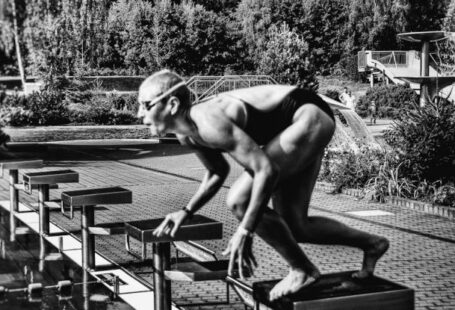Swimming is a demanding sport that requires a balance of strength, technique, and endurance. One crucial aspect of successful swimming performance is proper breathing. Efficient breathing techniques not only help swimmers maintain their stamina but also improve their overall performance. In this article, we will explore various breathing techniques that can enhance swim performance.
**The Importance of Proper Breathing**
Before diving into specific breathing techniques, it’s essential to understand the significance of proper breathing in swimming. Efficient breathing plays a vital role in providing oxygen to the muscles, helping swimmers maintain their energy levels throughout a race or training session. Additionally, controlled breathing can help swimmers stay relaxed and focused, leading to better stroke mechanics and overall performance in the water.
**Bilateral Breathing**
Bilateral breathing is a technique that involves alternating sides when taking breaths during swimming. This technique is beneficial for several reasons. Firstly, it helps swimmers develop a more symmetrical stroke, as breathing to both sides ensures that one arm does not become stronger than the other. Bilateral breathing also allows swimmers to maintain a more balanced body position in the water, reducing the risk of developing muscle imbalances.
**Exhalation Timing**
Timing your exhalation properly is crucial for efficient breathing in swimming. Many swimmers make the mistake of holding their breath or exhaling too quickly, which can lead to increased tension and reduced oxygen intake. The key is to exhale continuously while your face is in the water and inhale quickly when you turn your head to breathe. This rhythmic breathing pattern helps swimmers establish a steady flow of oxygen to the muscles, improving endurance and performance.
**Breathing Drills**
Incorporating breathing drills into your swim training can help you develop better breathing habits and enhance your overall performance. One popular drill is the “3-2-1” drill, where swimmers take three strokes, breathe on the third stroke, then repeat with two strokes and one stroke. This drill helps swimmers practice breathing on both sides and develop a consistent breathing pattern that can be applied during races.
**Interval Breathing**
Interval breathing is a technique that involves taking fewer breaths during specific segments of a swim, such as during sprints or high-intensity intervals. By reducing the frequency of breaths, swimmers can focus on maintaining a strong pace and rhythm without sacrificing performance. Interval breathing also helps improve lung capacity and teaches swimmers to manage their breathing more effectively in challenging situations.
**Breathing Synchronization**
Synchronizing your breathing with your stroke rate can significantly enhance your swim performance. By coordinating your breathing with each stroke, you can establish a smooth and efficient rhythm that maximizes your energy output. Experiment with different breathing patterns, such as breathing every two, three, or four strokes, to find what works best for you and enhances your overall performance in the water.
**The Mind-Body Connection**
Breathing techniques not only impact your physical performance but also play a crucial role in maintaining a positive mindset during swimming. Deep, controlled breathing can help calm your nerves, reduce anxiety, and enhance your focus and concentration in the water. By incorporating breathing exercises into your pre-race or pre-training routine, you can harness the power of the mind-body connection to improve your overall swim performance.
**Optimizing Your Breathing Strategy**
To optimize your breathing strategy and enhance your swim performance, it’s essential to practice different breathing techniques during training sessions. Experiment with bilateral breathing, exhalation timing, breathing drills, interval breathing, and breathing synchronization to find what works best for you. Remember that consistency is key, so continue to refine your breathing technique and incorporate it into your swim training routine to achieve your performance goals.
**Incorporating these breathing techniques into your swim training routine can help you improve your performance in the water. By focusing on proper breathing habits, you can enhance your endurance, stroke mechanics, and overall efficiency in the pool. Experiment with different techniques, practice consistently, and pay attention to how your breathing impacts your performance to unlock your full potential as a swimmer.**





